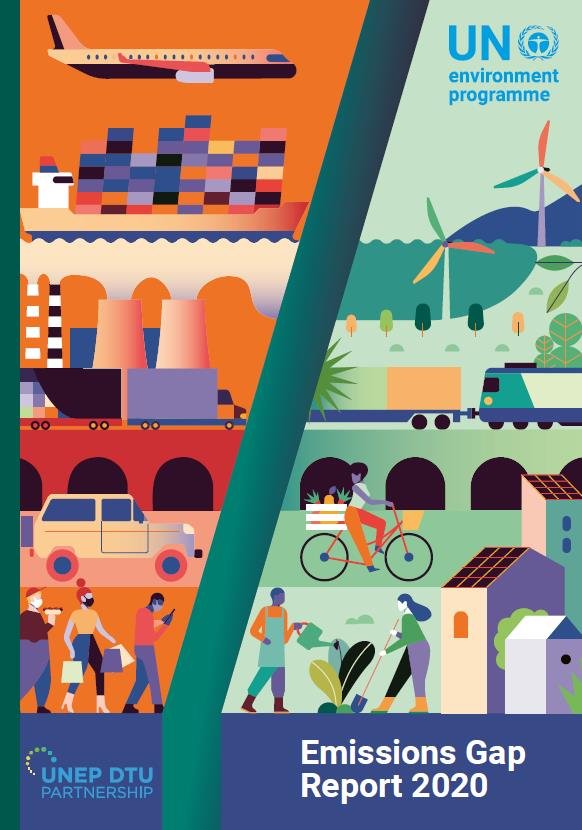 Read this article in French
Read this article in French- Share this article
- Subscribe to our newsletter
Emissions Gap Report 2020
The yearly Emissions Gap Report provides a view on the difference between where greenhouse emissions are predicted to be in 2030 and where they should be to avoid the worst impacts of climate change. Moreover, the latest edition, published by the UN Environment Programme (UNEP) in December 2020, considers especially consumer behaviour and the shipping and aviation sectors.
Governments could still attain the 1.5°C goal
If governments invest in climate action as part of pandemic recovery, and solidify emerging net-zero commitments with strengthened pledges at the next climate meeting – taking place in Glasgow in November 2021 – they can bring emissions to levels broadly consistent with the 2°C goal, UNEP says.
By combining a green pandemic recovery with swift moves to include new net-zero commitments in updated Nationally Determined Contributions (NDCs) under the Paris Agreement, and following up with rapid, stronger action, governments could still attain the more-ambitious 1.5°C goal.
Total greenhouse gas emissions have reached a new high in 2019
The report finds that in 2019 total greenhouse gas emissions, including land-use change, reached a new high of 59.1 gigatonnes of CO2 equivalent (GtCO2e). Global greenhouse gas emissions have grown 1.4 per cent per year since 2010 on average, with a more rapid rise of 2.6 per cent in 2019 due to a large increase in forest fires.
As a result of reduced travel, lower industrial activity and lower electricity generation due to the pandemic, carbon dioxide emissions are predicted to fall up to 7 per cent in 2020. However, this dip only translates to a 0.01°C reduction of global warming by 2050. Meanwhile, NDCs remain inadequate.
A green pandemic recovery, however, can cut up to 25 per cent off the emissions we would expect to see in 2030 based on policies in place before COVID-19. A green recovery would put emissions in 2030 at 44 GtCO2e, instead of the predicted 59 GtCO2e – far outstripping emission reductions foreseen in unconditional NDCs, which leave the world on track for a 3.2°C temperature rise.
Green recovery to achieve the climate goals
Such a green recovery would put emissions within the range that gives a 66 per cent chance of holding temperatures to below 2°C, but would still be insufficient to achieve the 1.5°C goal.
Measures to prioritise in green fiscal recovery include direct support for zero-emissions technologies and infrastructure, reducing fossil fuel subsidies, no new coal plants, and promoting nature-based solutions – including large-scale landscape restoration and reforestation.
To remain feasible and credible, however, these commitments must be urgently translated into strong near-term policies and action and reflected in NDCs. The levels of ambition in the Paris Agreement still must be roughly tripled for the 2°C pathway and increased at least fivefold for the 1.5°C pathway.
(UNEP/ile)
Read more and download Emissions Gap Report 2020 at UNEP website





Add a comment
Be the First to Comment